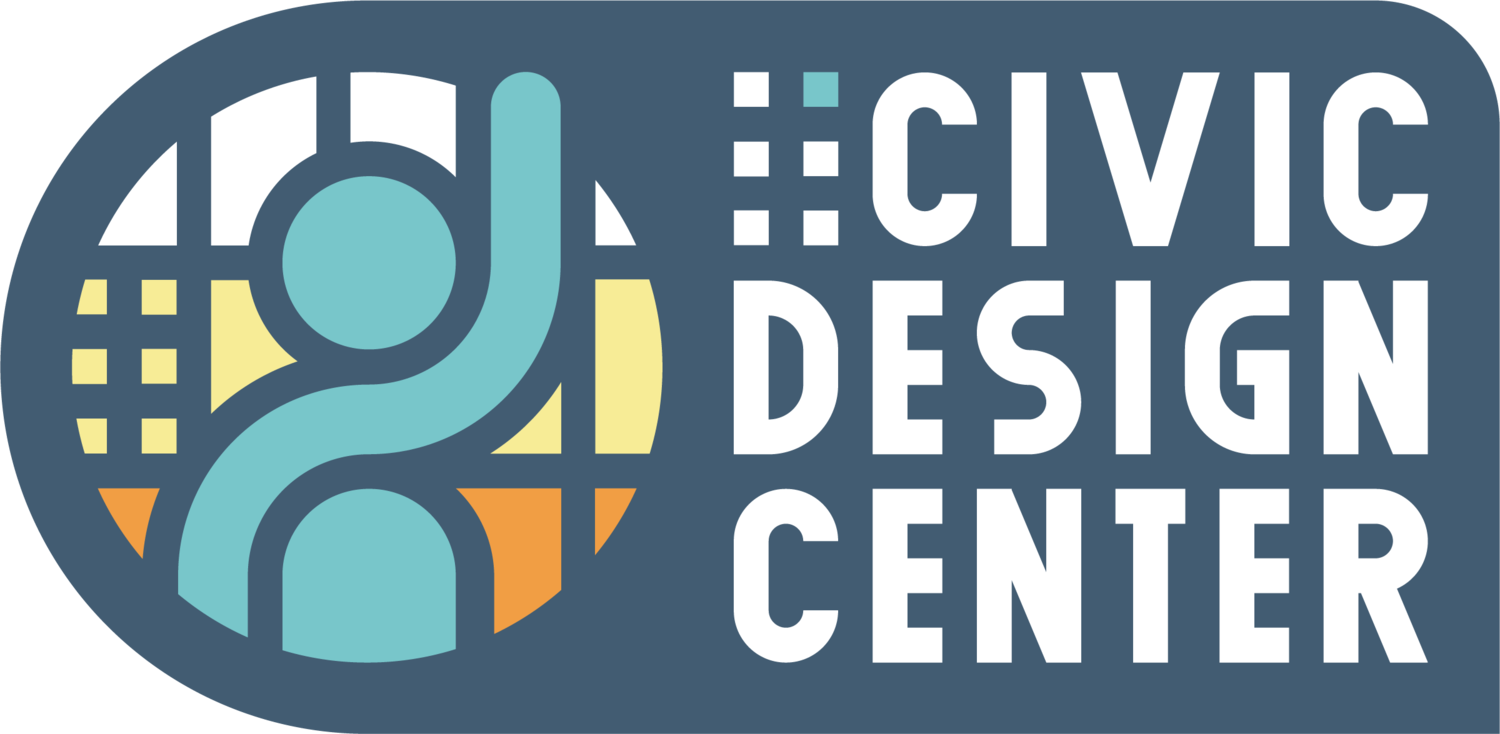Public Space For The Water’s Edge
By Remi Lynch, Design Manager
5 min read Lock One Park is being reimagined as a dynamic civic and ecological space that reconnects people to the Cumberland River by transforming the historic lock system into a place for swimming, boating, fishing, and gathering, while also offering natural play areas, picnic spaces, and future greenway connections that support reflection, recreation, and community engagement.
A diagram looking south over Lock One Park, highlighted in turquoise, showing its proximity to Downtown Nashville
In recent years, Lock One Park has been lovingly referred to by neighbors as “Nashville’s Quiet Treasure”—a peaceful, scenic place where families gathered for picnics, reflection, and connection to the area’s rich, though often overlooked, history. At the heart of this history is Heaton's Station, marked by a historic plaque that tells the story of 1780 pioneers who built a fort on this bluff that helped secure the early Cumberland settlements. To some, the remnants of Lock One—weathered walls, old stone, and overgrown corners—might appear forgotten or unimportant, but to local residents, they represent powerful links to the past and opportunities for learning, storytelling, and community gathering. Neighbors envisioned the site as a landing for small watercraft, a space to play, and a classroom in the open air where future generations could explore and honor Nashville’s layered past. This vision was brought to life by the Lock One Park Committee, a dedicated group of North and Northeast Nashville neighbors led by Co-Chairs Jack Cawthon and Harvey McDonald, with members Karen Brown Dunlap, Bobby Stockard, Patty Shultz, and Ludye Wallace—community voices working to ensure that Lock One’s potential is both preserved and shared. The park is currently leased by Metro Parks from the U.S. Army Corps of Engineers, whose approval is required for any modifications to the site. All historic features are protected under this arrangement, ensuring that any improvements honor and preserve the park’s cultural and historical significance. The Civic Design Center’s project helped revive neighbors’ ideas and seeks to expand the community vision.
WATER EDGE
Photos above show interesting existing features at the water’s edge of Lock One Park
Lock One Park offers a variety of uses spanning from the entry zone all the way down to the river's edge. The main draw to the park is its access to the Cumberland River, and the design highlights that connection through history and physical connection. The history of Lock One is that the lock was made for boats to traverse the river, but the lock system didn't have a long lifespan in Nashville, and the locks were removed.


Diagram of Lock One Park’s programs compared to visionary schematic designs from Civic Design Center
Now the park still has access to portions of that historic lock system, and the design wants to highlight that history. The footprint of the lock is no longer there, but portions of it are, and the design takes and reimagines the lock as a zone for people rather than moving boats. We took the concept of the lock and converted its footprint into a swimming pool that engages with the Cumberland River. Not all boat features were removed, though; there are opportunities for boats to pull up and dock along the lock walls, making another access point to the park. Along with the boats, there are spaces that can be dedicated to kayaks and smaller structures to enjoy the water and have a safe place to do so, and there's also opportunities to create zones dedicated to fishermen. The concept is trying to reestablish what the lock is and can be. We can create a civic plaza on the water, we can have the opportunity to physically engage with the river, we can create stronger links between our neighborhoods, and we can embrace one of our city's most important natural assets, the Cumberland River.
PARK SPACE
Vision plan for Lock One Park
The portions of the park that aren't water-focused still have a big role in the character of Lock One Park. They are the parts that become more passive and self-programmed when compared to the river's edge. This section is along the street and acts as the entryway to the park, and it wants to encourage the users to see the water, especially first-time visitors. For those who are frequent users, the upper zone caters to them in ways the water section can't do as well.
Optional parking plan for flat area on the east side of the Lock One Park
While a new 15-car parking lot was considered for the east side of Lock One Park near the proposed ADA ramp access, this option would require dismantling sections of the historic wall and replacing a flat lawn area with pavement—an intervention that could impact both the park’s historic character and green space. As an alternative, prioritizing multi-modal access offers a healthier and more sustainable approach to park connectivity. Although current sidewalk and greenway access is limited, the nearby WeGo Route 14 Whites Creek stop—just a block away—provides a strong foundation for future transit-oriented access. Planned greenway expansions will further enhance walking and biking connections to the park, encouraging active transportation, reducing car dependency, and supporting public health goals. While parking may still be necessary in limited capacity to ensure accessibility for all, especially those with mobility needs, investing in multi-modal infrastructure will better position Lock One Park as a truly inclusive, health-promoting public space.
Axon diagram of how the proposed park plan would engage with the Cumberland River
Through past engagement processes, there were hopes for picnic spaces, play opportunities, greenway connections, and spaces to reflect. Listening to this community feedback encourages a park design that provides spaces for visitors and, more importantly, for its neighbors. With the freedom and openness of the grassy lawns and pavilions in the park zone, people are able to activate them and bring in their own programming. These spaces would work great for larger groups coming together for a celebration, and at the same time, can scale down to hosting a smaller group or couples with the variety of nodes within the park.
Section diagram showing how the park could handle the change in the Cumberland River’s water level
A diagram showing an important greenway nexus just east of Lock One Park
For play opportunities, people will have a variety of options. Of course, there is the water play, but outside of that, the park space will have options too. With the character of the park being nature-focused (trees, dense plantings, stones, water), a natural playscape would feel right at home. By using these natural elements that exist on the site and by occupying some of the older foundations, there could be a play space that is custom to this park and offers something to everyone of all ages. For greenway connections, this park can become the main hub at a point where multiple greenways intersect with each other. There are future greenways that will come close to the park (Page's Branch and River North), bringing users to the area, and dreaming big, there could be a new bridge connection to the Cumberland River Greenway connecting both sides of the river together. If the greenway continues through the park and along the north side of the river, it has the opportunity to reconnect with the Cumberland River Greenway when it crosses back at the Clarksville Pike Bridge. So this park has a great opportunity to become a major hub along future greenway connections that also gives users a chance to engage with the river. Within all of these pockets and nodes created by the park's uses gives people have the chance to slow down, take in the river, and reflect on things. The history of the river, the lock creations, the current state of it, and where the future will take it.
Restoring Lock One Park is a step toward repairing the health disparities that have long affected the historically Black, historically underserved Haynes neighborhood. By replacing disinvestment with an accessible, inclusive landscape for active recreation, social connection, and quiet reflection, the park can help address unequal rates of chronic disease linked to limited green space and safe places to exercise. Reimagining the historic lock system as a civic destination reconnects residents to the Cumberland River and to their own neighborhood’s cultural legacy, while new greenway and transit links give people healthier, car‑free ways to reach jobs, schools, and other parks. Thoughtful features, ADA‑accessible routes, shaded gathering areas, natural playscapes, and places to fish or paddle ensure that residents of all ages and abilities benefit. In doing so, Lock One Park becomes a model of environmental justice: transforming an underutilized riverfront into a vibrant public asset that narrows health gaps, strengthens community pride, and proves that every neighborhood deserves, and can achieve, a healthy environment.







